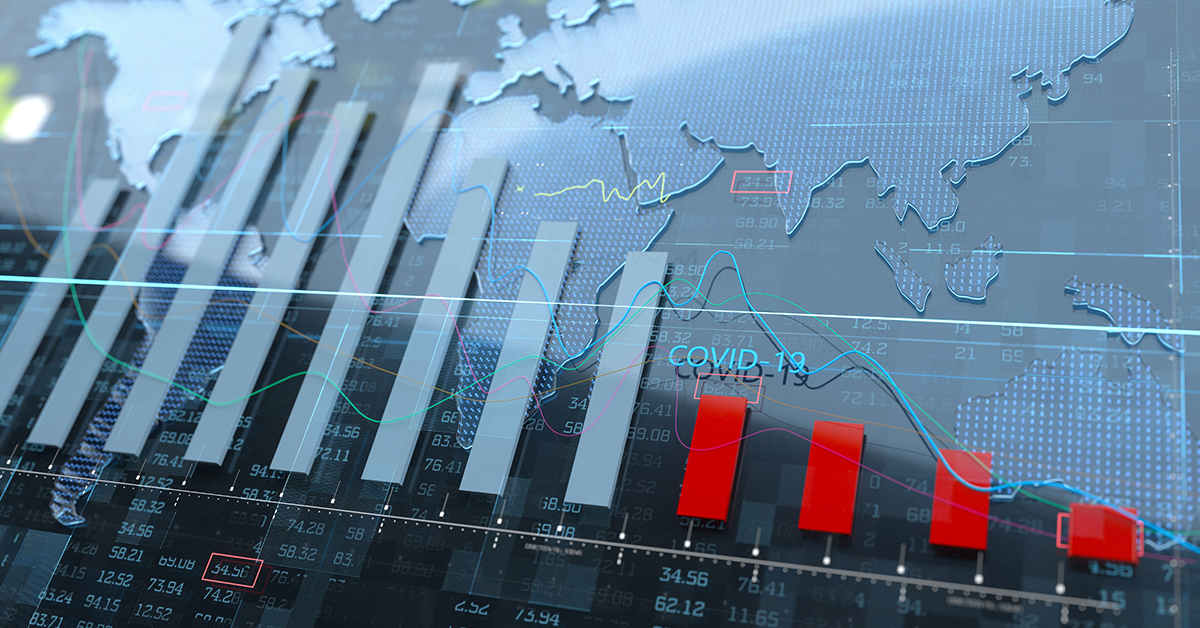Global Defence Industry: A Year of Strategic Shifts and Growth
22 October 2024
Over the past year, the defence industry has experienced significant transformations driven by a combination of rising geopolitical tensions, rapid technological advancements, and increased military spending. As nations across the globe recalibrate their defence strategies, the sector continues to emerge as a key area of interest for investors seeking long-term growth opportunities. In this article, we explore the latest trends in the defence industry, its evolving priorities, and the driving forces shaping its future.
Global Military Budgets: A Shift Toward Long-Term Defence Investment
Military expenditures worldwide have exceeded $2 trillion for the first time in 2021 and continues to grow.1 This increase signals a decisive shift in government priorities, where defence spending has moved to the forefront. In past decades, many nations were criticized for underinvesting in defence, but current circumstances indicate that elevated military spending levels are here to stay.
In a speech at the 2024 London Defence Conference, former UK Defence Secretary Grant Shapps echoed NATO Secretary General Jens Stoltenberg’s sentiment regarding the transition from a "post-war" to a "pre-war" world. Shapps emphasized the end of the "peace dividend" era that followed the Cold War, stating that geopolitical tensions, driven by threats from countries like Russia, China, Iran, and North Korea, demand a new approach to defence spending. He called for NATO members to ramp up their military budgets to prepare for an era where conflicts seem increasingly likely. Shapps further highlighted NATO’s expansion, particularly with Finland and Sweden joining, and the UK’s significant involvement in upcoming NATO exercises as signs of preparing for potential future conflicts. He stressed the importance of collective deterrence and the need to ensure Western nations are equipped for what lies ahead.2
Countries such as the United States, China, Russia, and India have all substantially increased their defence expenditures to fortify their military capabilities. For instance, Germany has proposed raising its defence spending to 3.5% of its GDP, a significant move for a country that traditionally prioritized economic over military might.3 Similarly, Russia’s military budget is projected to reach $140 billion by 2024, driven by its ongoing military operations and strategic needs despite economic sanctions.4
Current Industry Outlook: Accelerating Demand for Advanced Military Technology
The defence sector’s growth is not solely fueled by increased budgets but also by the rising demand for advanced and modernized military technologies. The rapid evolution of warfare tactics, combined with emerging threats, has led nations to invest heavily in technologies such as unmanned aerial vehicles (UAVs), artificial intelligence (AI), cybersecurity solutions, and space-based defence systems.
AI, in particular, is transforming the defence landscape. Military forces are increasingly utilizing AI-powered systems for autonomous operations, enhanced surveillance, and improved decision-making capabilities.5In addition, space technology has taken center stage, with nations and companies focusing on space-based infrastructure, which is essential for communication, reconnaissance, and missile defence.
Governments are now actively partnering with private companies to transfer military technologies from research and development to operational deployment. This technology transfer allows for faster integration of new innovations into the defence framework, enabling militaries to respond more efficiently to modern-day challenges.
Strategic Priorities: The Move Toward Multi-Domain Operations
Defence strategies are rapidly shifting toward multi-domain operations (MDO), an approach that integrates land, sea, air, space, and cyber capabilities. This holistic strategy allows militaries to coordinate their efforts more effectively and respond swiftly to evolving threats that arise across different domains.
As hybrid warfare—including cyberattacks, disinformation campaigns, and irregular combat—becomes more prevalent, MDO provides an integrated framework for defence. Military forces are increasingly relying on cross-domain coordination to maintain a strategic advantage over adversaries.
The ability to control and operate across multiple domains is becoming essential for modern defence forces. Companies that offer solutions supporting multi-domain capabilities are poised to see increased demand for their products and services in the coming years.
Technology Transfer: Bridging the Gap Between Innovation and Deployment
One of the defence industry’s most significant areas of focus is speeding up the transfer of technology from the lab to the battlefield. Faster deployment of cutting-edge technologies has become a top priority, as nations seek to stay ahead in the global arms race. The introduction of autonomous systems, including UAVs, unmanned ground vehicles (UGVs), and autonomous naval vessels, is revolutionizing the defence sector by enhancing the military's ability to conduct operations remotely and efficiently.
Cybersecurity is another critical area of technological investment. As military operations and communications become increasingly digital, securing networks, systems, and data from cyber threats has become imperative. The integration of AI-driven cybersecurity solutions is enabling militaries to defend against increasingly sophisticated cyberattacks.
Moreover, the trend toward automation and autonomy in defence systems is accelerating. Autonomous drones, for instance, are now being used not only for surveillance but also for combat and logistical support, reducing human involvement and mitigating risks on the battlefield.
Evolving ESG Considerations in the Defence Sector
The defence industry is not immune to the growing influence of environmental, social, and governance (ESG) considerations. While traditionally viewed as an industry detached from sustainability concerns, the sector is beginning to acknowledge the importance of incorporating ESG factors into its operations.
NATO’s Chairman of the Military Committee, Rob Bauer, has underscored the role of defence in creating the societal conditions necessary for any form of sustainability. Bauer argued that without a secure and stable society, achieving long-term ESG goals would be impossible. He has even called on pension funds to invest in defence companies, framing security as a prerequisite for sustainability. Bauer’s reasoning highlights that responsible investing in defence can be aligned with safeguarding the fundamental pillars of society.6
Some defence companies are now exploring ways to reduce the environmental footprint of their manufacturing processes by adopting cleaner technologies and optimizing energy consumption. These steps are particularly important as governments and institutional investors increasingly prioritize ESG-aligned investments.
Moreover, the ethical use of advanced technologies such as AI is becoming a focus in defence. There are growing discussions about ensuring that these technologies are developed and deployed in a way that adheres to international humanitarian laws and protects human rights. As militaries adopt autonomous systems, the industry is also grappling with the social responsibility of minimizing collateral damage and ensuring accountability in warfare.
For investors, defence companies that successfully integrate ESG principles may offer unique opportunities for growth, as national security and social responsibility increasingly overlap in modern geopolitical dynamics.
Global Trends: A Diverse Range of Defence Markets
Defence is no longer the domain of a few superpowers. While the United States remains the largest defence spender and leader in technological innovation, other nations are emerging as key players in the industry. The rise of defence industries in Europe, Asia, and the Middle East has created new opportunities for collaboration and competition across the globe.
Countries like the United Kingdom, France, Israel, South Korea, and India are making substantial investments in defence innovation, contributing to a broader and more diversified global defence market. The development of sophisticated defence technologies, including missile systems, cybersecurity solutions, and space defence, has allowed these nations to build strong defence capabilities that complement and, in some cases, challenge traditional military powers.7
Performance and Future Outlook
The defence industry has shown considerable growth in recent years, driven by increased government spending and technological advancements. While traditionally viewed as a defensive sector, recent trends demonstrate that the defence industry also offers significant opportunities for growth and innovation.
Investors seeking exposure to the sector can benefit from long-term opportunities driven by rising global military expenditures, the adoption of advanced technologies, and increased government demand for military modernization. As geopolitical tensions continue to shape global priorities, defence companies that can deliver cutting-edge solutions and adapt to evolving military needs will be well-positioned to thrive.
The defence industry’s future growth will also be shaped by ongoing developments in AI, space, and cybersecurity. As these technologies continue to evolve, defence companies will play a pivotal role in defining the future of warfare, national security, and global stability.
Conclusion: Defence in a Changing World
The defence industry is at a critical juncture, driven by escalating geopolitical tensions and the increasing importance of advanced technologies. Governments around the world are ramping up their defence spending to address emerging threats, while also investing in the future of military capabilities through innovations in AI, space technology, and cybersecurity.
In this rapidly evolving landscape, the defence sector will continue to play a vital role in global security and economic stability. As countries prioritize multi-domain operations and technological advancements, companies in the defence industry are uniquely positioned to capitalize on these trends. The convergence of defence and technology will shape the future, offering substantial growth opportunities for those who can navigate this complex and dynamic industry.
1 Stockholm International Peace Research Institute (SIPRI), “World Military Expenditure Passes $2 Trillion for First Time.” April 2022.
2 UK Government, "Grant Shapps Speech at London Defence Conference 2024." February 2024.
3 Bloomberg, “Germany Says Its Defence Spending Could Increase to 3.5% of GDP.” February 2024.
4 Anadolu Agency, "Russia’s Military Spending in 2024 Estimated at $140B." February 2024.
5 Center for Technology and National Security, "Strategic Vision for Critical Technology Areas." November 2023.
6 NATO, “NATO's Military Committee Chairman Rob Bauer Discusses Defence and Security.” November 2023.
7 Statista, “Military Expenditure by Country and its Share of GDP,” 2023.
IMPORTANT INFORMATION
This is a marketing communication. Please refer to the prospectus of the UCITS and to the KID before making any final investment decisions. This information originates from VanEck (Europe) GmbH, which has been appointed as distributor of VanEck products in Europe by the Management Company VanEck Asset Management B.V., incorporated under Dutch law and registered with the Dutch Authority for the Financial Markets (AFM). VanEck (Europe) GmbH with registered address at Kreuznacher Str. 30, 60486 Frankfurt, Germany, is a financial services provider regulated by the Federal Financial Supervisory Authority in Germany (BaFin).
The information is intended only to provide general and preliminary information to investors and shall not be construed as investment, legal or tax advice VanEck (Europe) GmbH and its associated and affiliated companies (together “VanEck”) assume no liability with regards to any investment, divestment or retention decision taken by the investor on the basis of this information. The views and opinions expressed are those of the author(s) but not necessarily those of VanEck. Opinions are current as of the publication date and are subject to change with market conditions. Certain statements contained herein may constitute projections, forecasts and other forward-looking statements, which do not reflect actual results. Information provided by third party sources is believed to be reliable and have not been independently verified for accuracy or completeness and cannot be guaranteed. Brokerage or transaction fees may apply.
All performance information is based on historical data and does not predict future returns. Investing is subject to risk, including the possible loss of principal.
No part of this material may be reproduced in any form, or referred to in any other publication, without express written permission of VanEck.
© VanEck (Europe) GmbH
Important Disclosure
This is a marketing communication. Please refer to the prospectus of the UCITS and to the KID before making any final investment decisions.
This information originates from VanEck (Europe) GmbH, which has been appointed as distributor of VanEck products in Europe by the Management Company VanEck Asset Management B.V., incorporated under Dutch law and registered with the Dutch Authority for the Financial Markets (AFM). VanEck (Europe) GmbH with registered address at Kreuznacher Str. 30, 60486 Frankfurt, Germany, is a financial services provider regulated by the Federal Financial Supervisory Authority in Germany (BaFin).
The information is intended only to provide general and preliminary information to investors and shall not be construed as investment, legal or tax advice VanEck (Europe) GmbH, VanEck Switzerland AG, VanEck Securities UK Limited and their associated and affiliated companies (together “VanEck”) assume no liability with regards to any investment, divestment or retention decision taken by the investor on the basis of this information. The views and opinions expressed are those of the author(s) but not necessarily those of VanEck. Opinions are current as of the publication date and are subject to change with market conditions. Certain statements contained herein may constitute projections, forecasts and other forward-looking statements, which do not reflect actual results. Information provided by third party sources is believed to be reliable and have not been independently verified for accuracy or completeness and cannot be guaranteed. Brokerage or transaction fees may apply.
All performance information is based on historical data and does not predict future returns. Investing is subject to risk, including the possible loss of principal.
No part of this material may be reproduced in any form, or referred to in any other publication, without express written permission of VanEck.
© VanEck (Europe) GmbH / VanEck Asset Management B.V.
Sign-up for our ETF newsletter
Related Insights
Related Insights
20 November 2024
14 November 2024




